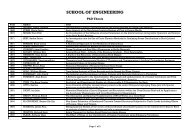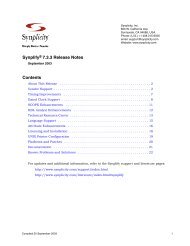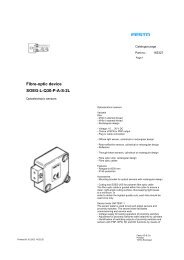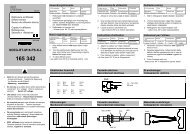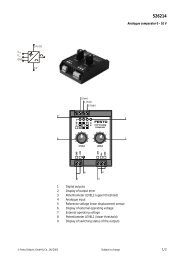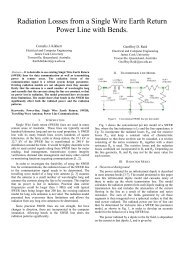gPROMS ModelBuilder version 2.3.1
gPROMS ModelBuilder version 2.3.1
gPROMS ModelBuilder version 2.3.1
Create successful ePaper yourself
Turn your PDF publications into a flip-book with our unique Google optimized e-Paper software.
2.3 Project organisation<br />
<strong>2.3.1</strong> Project properties<br />
11<br />
Project organisation<br />
Each Project records information relating to the user(s) who created and last modified it, as well as the dates and<br />
times of creation and last modification. This information is read-only and is recorded and maintained automatically<br />
by <strong>ModelBuilder</strong> under the Project's Properties.<br />
Project Properties can be viewed by right-clicking on the Project's name in <strong>ModelBuilder</strong>'s navigation tree and<br />
selecting “Properties” in the context-sensitive menu that appears (see Figure 2.6).<br />
The Properties dialog has a second tab that controls the list of Projects that can be cross-referenced - this is<br />
discussed below.<br />
Right-click on<br />
project name to<br />
see this menu<br />
Enable/disable<br />
display of empty<br />
Entity groups<br />
Cross-references<br />
tab<br />
Figure 2.6 Project properties dialog<br />
2.3.2 Entity cross-referencing and hierarchical libraries<br />
Enable/disable<br />
Library project in<br />
the project tree<br />
In <strong>gPROMS</strong> <strong>ModelBuilder</strong>, the Entities in one Project may make references to Entities that belong to another Project.<br />
For example,<br />
a Model Entity in Project A may refer to Variable Types in a Project B in declaring its Variables;<br />
a Model Entity in Project A may refer to Models in a Project B in declaring its Unit sub-models;<br />
a Task or Process Entity in Project A may refer to Models and/or Tasks in Project B;




